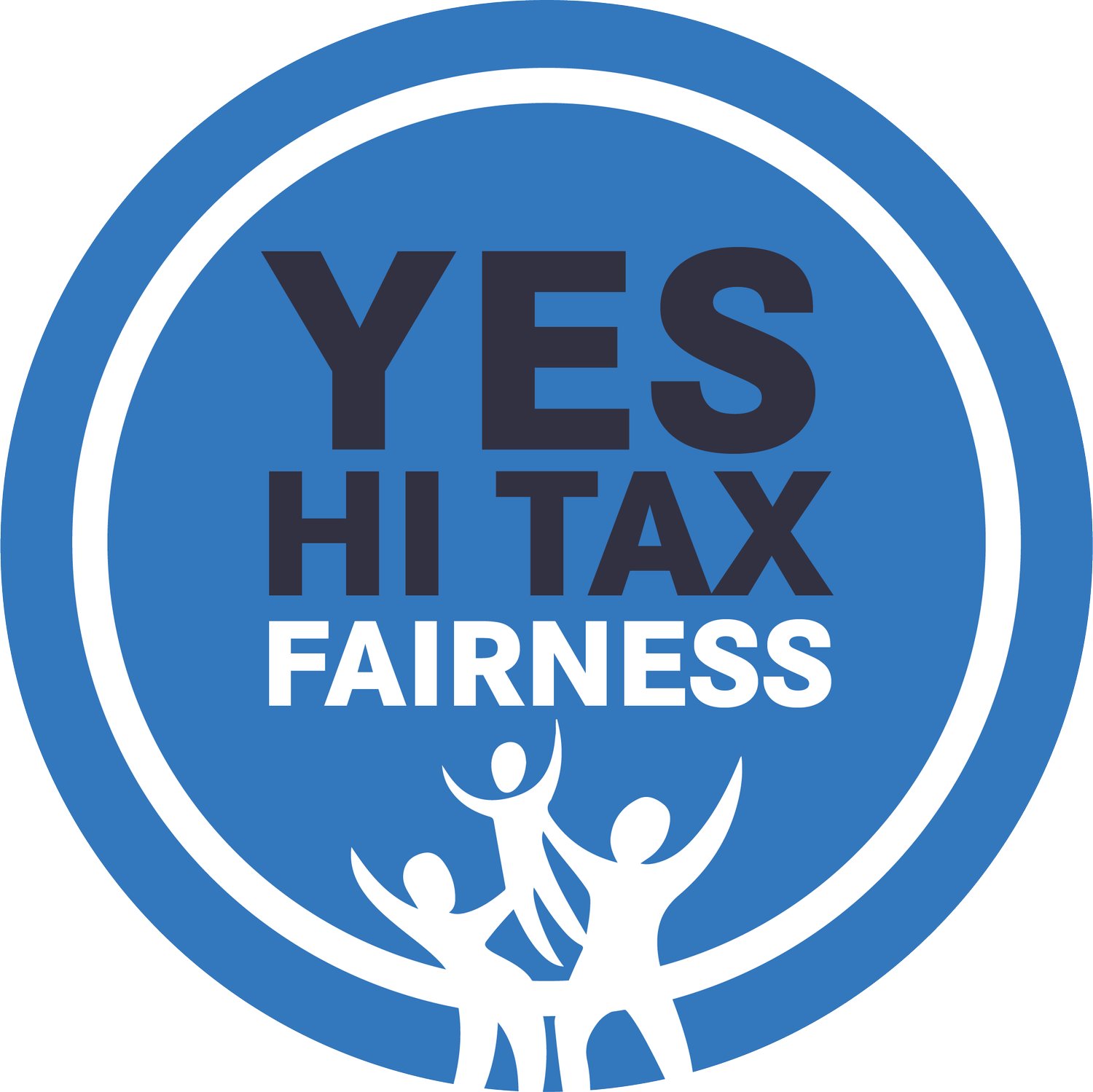Food Excise Tax Credit
Helping local families afford the high cost of food in Hawaiʻi.
As Hawaiʻi families struggle to put food on the table, the General Excise Tax (GET) is effectively another hungry mouth to feed. The GET taxes food and other life necessities, placing a significant additional financial burden on people who are working hard to make ends meet.
Hawaiʻi’s Refundable Food Excise Tax Credit was created to help ease the tax burden on basic necessities. Currently, the credit does not automatically keep up with inflation, which means that the tax burden on basic necessities increases year after year, as living costs go up.
Inflation causes the price of food and other necessities to increase year after year. $100 worth of food may cost $110 five years from now. As food costs increase, the amount you pay in taxes also increases—with a 4 percent GET, $100 worth of food would be taxed at $4.00; $110 would be taxed at $4.40.
While food costs and GET tax bills increase automatically along with inflation, current law keeps the dollar amount of the Food Excise Tax Credit constant. As a result, the tax rates for Hawaiʻi residents increase over time absent an act of the legislature.
Tax credits similar to the Food Excise credit have gone decades without an increase, leaving Hawaiʻi residents with heavier and heavier tax burdens each year.
The GET hits low-income families harder than rich ones.
Hawaiʻi’s low-income families face the second-highest tax rate in the nation, with our lowest-income households paying almost twice as much of their income (15 percent) in taxes as those in the top 5 percent (who pay about 9 percent).
A main reason for this disparity is the General Excise Tax (GET), which is applied to nearly all goods and services in Hawaiʻi. It hits our low-income and working-class families harder because they spend almost all of their earnings on items and services that are taxed by the GET.
Hawaiʻi has the highest cost of living in the nation. One of the main contributing factors is our high cost of food. Hawaiʻi is one of only seven states that fully taxes groceries, and researchers have found that grocery taxes increase food insecurity among poorer residents who do not get SNAP benefits (formerly known as food stamps).
Figure 1. The GET takes an 11 percent chunk out of the incomes of the lowest earners in Hawaiʻi, while only taking 1.2 percent of income from the wealthiest 1 percent of earners.
The Food Excise Tax Credit was created to lessen the burden on those families who are hard hit by the GET, but is out of date.
Currently, tax filers who earn less than $50,000 (or $30,000 for single filers) can get up to $110 per qualified exemption. The less a worker earns, the more they can get back. Even those who have no taxable income can receive this credit in many cases.
The Refundable Food/Excise Tax Credit was created in 2007, and the amounts that families could get back were updated to catch up with inflation in 2015.
We should update the amount of the Refundable Food/Excise Tax Credit to make up for the inflation of the past few years, as well as schedule cost-of-living adjustments for the next four years. That would mean increasing the maximum credit value to $118 in 2020, $125 in 2022, and $130 in 2024.
In addition, the income eligibility cut-offs for the Refundable Food/Excise Tax Credit have not been adjusted for cost-of-living increases since 2007, which means that fewer and fewer of our low-income and working-class families can claim the credit.
We should raise the income thresholds to catch up to inflation and schedule increases. That translates to raising the maximum annual eligible income level to $68,000 / $41,000 in 2024.
Figure 2. Most states with a sales tax of some form exempt groceries.




